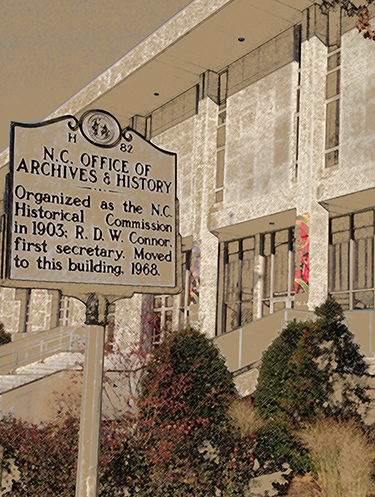Reginald Aubrey Fessenden (1866-1932), who was born in Brome County, Quebec, Canada,
was a radio pioneer and is considered by many to be the "father of voice radio." In
1886, Fessenden went to work for Thomas Edison at the Edison Machine Works, who, at
that time, was laying electrical conduits in the streets of New York. He was offered
a job testing the quality of the interconnections of the conduits. Once the job was
completed, Edison offered him a job in one of his laboratories and eventually made
him chief chemist. In 1890, he began to concentrate on electrical engineering, with
his interests turning to wireless radio. During his lifetime, he introduced the potential
of several concepts and applied them to radio in ways that many now take for granted.
Over an 18 month period in 1901-1902, Fessenden spent time on both Roanoke Island
and Hatteras Island, North Carolina, conducting experiments to find a successful system
to transmit and receive the sound of voice using continuous waves. He constructed
50 foot towers on Roanoke Island, Hatteras Island and Cape Henry (Virginia), in order
to conduct his research. By March 1902, he had demonstrated a successful transmission
and reception of voice with his devices. He sent a 127 word message from Cape Hatteras
to Roanoke Island. By Christmas Eve, 1906, he had refined his system enough to make
the first public demonstration of a voice radio broadcast. He passed away at his estate
in Bermuda in 1932.
Plans to memorialize his work in the area began in 1941. Members were recruited to
the Fessenden National Memorial Association under the leadership of D. Victor Meekins.
These plans were well underway by 1963. However, when Meekins died a year later in
1964, the group became inactive. Meekins' son Roger tried to resurrect the group,
but in 1980, transferred the land they had set aside for their proposed memorial to
the Roanoke Island Historical Association, the producers of America's longest running
outdoor symphonic drama,
The Lost Colony.
